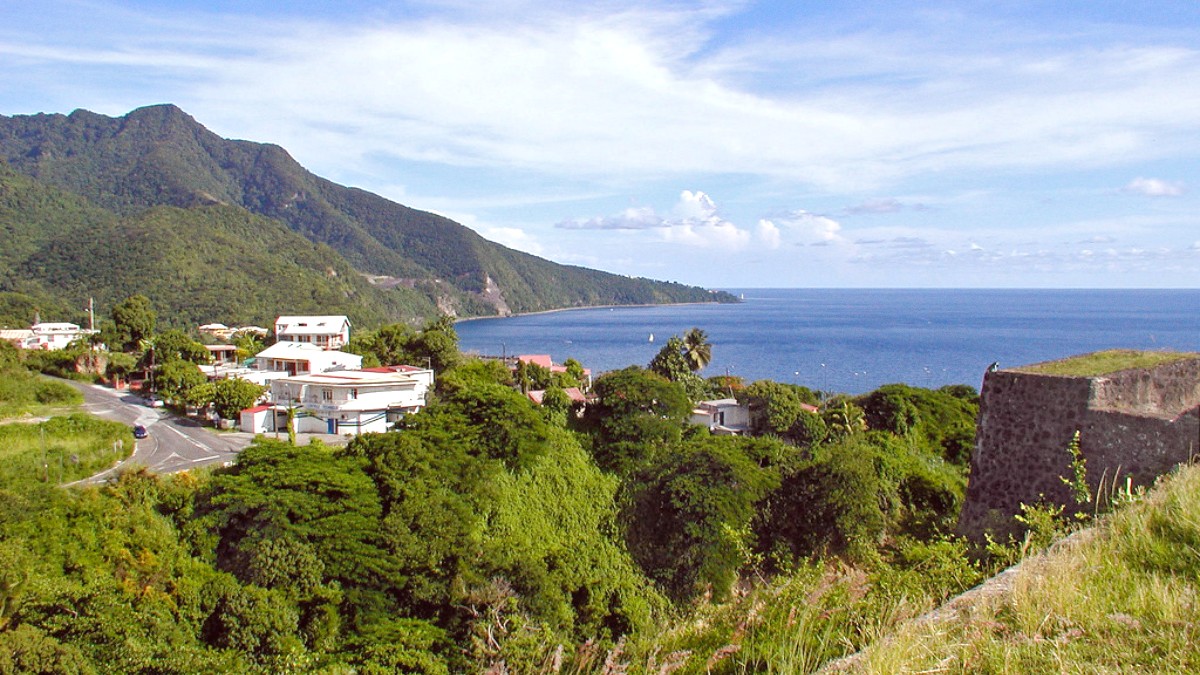
Guadeloupe
Pointe-à-Pitre boasts several iconic landmarks that tell the city's story, reflecting its rich history and culture.
Discover the must-visit sites that capture the essence of Guadeloupe.
These institutions provide deep cultural and historical insights into Guadeloupe.
Typically open Tuesday-Sunday (approx. 9 AM - 6 PM), closed Mondays. An entrance fee applies (e.g., €15-€20). Audio guides enhance the visit. Pre-booking tickets online is recommended to avoid queues.
Typically open daily from morning to early afternoon (approx. 6 AM - 2 PM), closed Sundays. No fee to enter. Always ask for permission before photographing vendors.
Generally open during daylight hours for visitors, free entry. Capture the unique ironwork details.
Visit Mémorial ACTe right at opening time (9 AM) or later in the afternoon (after 3 PM). The city is generally less crowded on weekends.
Head to Fort Fleur d'Épée in nearby Le Gosier for panoramic vistas of Pointe-à-Pitre and its bay.
While Pointe-à-Pitre is an urban center, nearby natural attractions are easily accessible for day trips.
Parc national de la Guadeloupe (on Basse-Terre) protects rainforest, waterfalls, and La Soufrière volcano. Jardin Botanique de Deshaies (Basse-Terre) features tropical plants and colorful birds.
Fort Fleur d'Épée (Le Gosier) provides excellent scenic views of Pointe-à-Pitre. Beaches of Le Gosier provide opportunities for relaxation, swimming, and water sports.
Mangrove Areas (Grand Cul-de-Sac Marin) boat tours provide birdwatching. Guadeloupe National Park (Basse-Terre) is home to diverse wildlife.
La Soufrière Volcano (Basse-Terre): The highest point in the Lesser Antilles, an active volcano. Provides challenging hiking opportunities to its summit (when safe).
Pointe-à-Pitre does not have direct swimming beaches within the city center. The closest popular swimming beaches are in nearby Le Gosier, like Plage de la Datcha and Plage de l'Auberge de la Vieille Tour.
Beyond the main attractions, Pointe-à-Pitre and its vicinity hold some less-discovered treasures.
Seek out authentic "lolos" (informal restaurants) outside tourist areas for genuine Creole food. Explore smaller, less-known local markets.
The northern coast of Grande-Terre, including Port-Louis and Anse-Bertrand, provides stunning, wilder beaches and dramatic coastal scenery, with fewer crowds.
Pointe-à-Pitre offers various unique photo opportunities beyond its main attractions.
Beyond Pointe-à-Pitre, the rest of Guadeloupe awaits with its diverse landscapes and attractions.
Consider day trips to experience the full scope of what the island provides.
The lush, volcanic island of Basse-Terre provides a dramatic contrast to Grande-Terre.
Grande-Terre boasts stunning white-sand beaches, perfect for relaxation and water sports.
Take a ferry from Pointe-à-Pitre to discover Guadeloupe's smaller islands.
Ensure a smooth trip with these practical considerations.
Guadeloupe provides a rich and diverse experience for every traveler.
Confirm flight details and airport transfers in advance.
Account for any liquid purchases (rum, preserves) in checked luggage.
Guadeloupe invites return visits to discover more of its charm.
The Euro (€) is the official currency in Guadeloupe. Credit cards are widely accepted, but it is useful to carry some cash for smaller purchases at markets or street food vendors.
Check latest exchange ratesFrench is the official language. Antillean Creole is also widely spoken by locals. Learning a few basic French phrases will be appreciated and can make interactions smoother.
Renting a car is the most convenient way to explore the island, providing flexibility. Public buses cover main routes, but their frequency can vary. Taxis are available but can be expensive for longer distances.
Guadeloupe uses 220V, 50Hz, with European standard two-pin plugs (Type E). Travelers from countries with different voltage or plug types will need an adapter and/or converter.
Atlantic Standard Time (AST), UTC-4. There is no daylight saving time.
Guadeloupe has a tropical climate with two main seasons: a dry season and a wet season.
Also known as the hurricane season, though direct hits are infrequent.
It is always advisable to purchase travel insurance that covers medical emergencies, trip cancellations, and unforeseen circumstances.
This provides peace of mind throughout your journey.
Guadeloupe strives to improve accessibility, but infrastructure can vary. Review the following information for planning your trip.
Public transportation, including buses, may not be fully accessible for individuals with mobility challenges. Taxis might provide better options, but it is advisable to confirm accessibility when booking.
Larger hotels and newer resorts are more likely to provide accessible rooms and facilities. Smaller guesthouses or older properties may have limited accessibility.
Accessibility at attractions varies. Modern sites like Mémorial ACTe are designed with accessibility in mind, but older historical sites or natural attractions may have uneven terrain or stairs.
Prior research can greatly improve the experience.
Many restaurants and shops, especially those in newer buildings or tourist areas, strive for accessibility. However, smaller, traditional establishments may have steps or narrow entrances.
Prioritize open-air or ground-floor establishments.
Guadeloupe has a modern healthcare system. Hospitals and clinics are available, mainly in larger towns like Pointe-à-Pitre and Basse-Terre.
Pharmacies are well-stocked for common ailments.
Thorough planning and communication with service providers can mitigate many accessibility challenges.
Seek out local organizations or tour operators specializing in accessible travel for personalized advice.
A flexible mindset and patience will assist with unexpected situations.